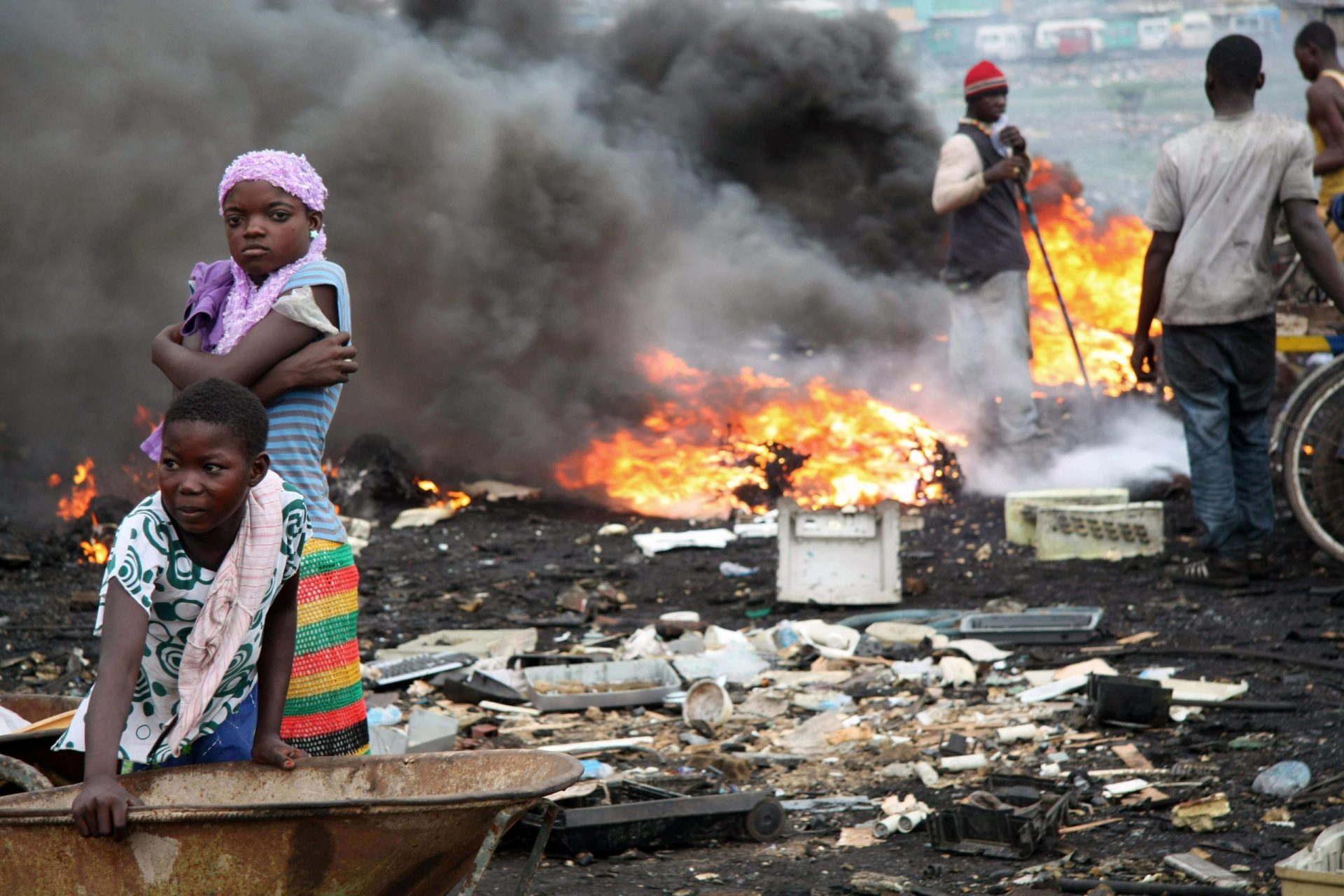Between 2006 and 2016, Pure Earth published a series of annual reports, The World’s Worst Polluted Places, that brought attention to the industrial pollution crisis that had been building in low- and middle-income countries. Our research and program team chemical hazards and industries that pose a grave threat to human health.
Visit the website to see the reports from 2008 – 2016: World’s Worst Polluted Places
The inaugural report published in 2006 can be found here. And the 2007 report can be found here.
Below is an excerpt from the introduction to the first report published 18 years ago.
World’s Worst Polluted Places – the Top Ten – September 2006
The Unfinished Challenge of Pollution
After decades of effort and attention, industrial pollution is now only an occasional worry
for most of the developed world. Although there are a few remaining threats, pollution is
generally regarded as a problem that is carefully regulated, managed and watched over by
many.
This is not the case in the poorest countries. There, pollution continues to be a major
source of death, illness and long-term environmental damage. Across the developing
world, pollution kills thousands of people indiscriminately, shortens lives, damages
children’s development and growth, and creates a background of chronic illnesses that
makes strong economic development nearly impossible.
Living in a town with serious pollution is like living under a death sentence. If the damage
does not come from immediate poisoning, then cancers, lung infections and mental
retardation are likely outcomes. Often insidious and unseen, and usually in places with
deficient and exhausted health systems, pollution is an unacknowledged burden of the
poor and unvoiced in the developing world. It is a major factor impairing economic growth,
and a significant strain on the lives of already impoverished people.
It is worse in some places than others.
Most poor countries have cities or estates where industry is concentrated, usually well
away from the capitals. In these places we find soil, air and water contamination not just
from active enterprises (many of them antiquated), but also from the legacy of decades of
uncontrolled emissions. There are soil and groundwater that have been poisoned, rivers
that ooze toxins, and lakes that cannot be approached safely, let alone used for irrigation
or drinking. There are some towns where life expectancy approaches medieval rates,
where birth defects are the norm not the exception. In other places children’s asthma
rates are measured above 90 percent, or mental retardation is endemic. In these places,
life expectancy may be half that of the richest nations. The great suffering of these
communities compounds the tragedy of so few years on earth.
These areas are the most polluted places on earth. The world knows of the incidents at
Chernobyl and Bhopal, but these other stories are never heard, never exposed or
publicized. Instead, they have developed over time into horrific human disasters.
How did they get like this? For one thing, many developing countries have inadequate
pollution controls. Even if sub-standard or antiquated factories were brought to modern
requirements, the legacy of old contamination from the past would continue to poison
citizens. These failings are compounded by a lack of knowledge at the local level and
weakness in the capability of civil society to force justice when governments are negligent.
In Blacksmith’s years of trying to help communities and local groups with their own specific
problems, more than three hundred “polluted places” in over thirty countries have been
nominated for remediation. Local and concerned people put these places forward as
problems that need to be addressed urgently.
Which sites are the worst?
Despite the emotional and incomparable suffering of poor communities world wide, this
report attempts to objectively expose sites that have the most extreme effects on human
health. Despite isolation of the sites and complacency of those responsible, this list
recognizes that the challenges of pollution are far from resolved for millions in the
developing world.
This report is also intended to indicate that there are potential remedies for these sites.
Problems like these have been solved in the developed world, and we have the capacity
and the technology to spread our experience to our afflicted neighbors. This report’s
purpose is to highlight significant problem sites, and show that something can be done to
begin to fix them. A discussion of solutions is presented later in this document.
For those who have other sites to recommend to the list, or have other feedback on the
process, we welcome your input so that the next version can be more definitive.
This list of top horrors is not exact, but it’s a start. More importantly, it’s a start to a
process that has a definitive and foreseeable end; a world where industrial development is
no longer life-threatening.

